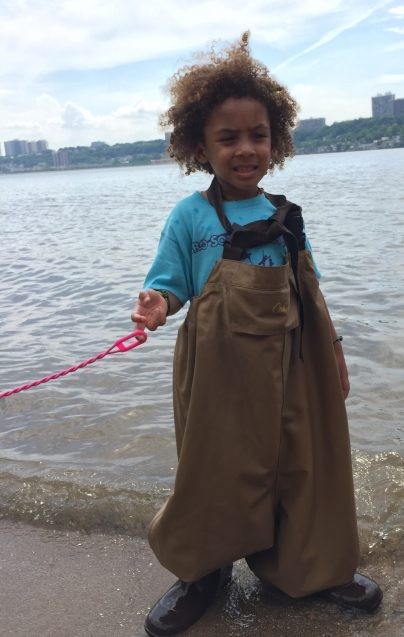On June 1st, Fish Will Be Filling Our Nets All Around New York City
Join us on Saturday, June 1st to explore one of New York’s most underrated treasures: our productive waterways!

Join us on Saturday, June 1st, to explore one of New York’s most underrated treasures: our productive waterways! For the 5th year, Columbia University’s Lamont-Doherty Earth Observatory is proud to work with the World Science Festival and the New York State Department of Environmental Conservation to bring this amazing family friendly, free event to the public. Pick one of 17 sites spread throughout all five boroughs and into New Jersey. Each site is hosted by one of our incredible set of partner organizations with a scientist or highly experienced naturalist running the program. There will be plenty of opportunity for the public to get their ‘hands wet’ as they come face to face with the thriving fish populations of the Hudson River and surrounding waterways.
Check out the locations and times on this handy map and plan to join us.

To see what’s in store for attendees, read about some cool catch information from 2018:
At Bush Marine Terminal Park the team netted a feather blenny (Hypsoblennius hentz), a very small tropical marine stray not native to the Hudson, nor expected to be netted here. Marine strays can be diverted from the Gulf Stream to enter our waterways. Over the many years of fish cataloging by the Hudson River Estuary Program NYSDEC the number of fish identified in the estuary (currently 228 and counting) has been expanding through the netting of more temperate and marine strays. Currently they represent about 30 percent (temperate strays) and 5 percent (marine strays) of the total list.

Feather blenny’s scaleless bodies appear smooth and silky but the long single continuous dorsal fine running the length their back and two feather-like tentacles that appear to sprout from their head are what makes them unique in appearance. The first one identified in the Hudson was in 1993 at the River Project (one of our Great Fish Count partners) with a second occurrence in 2016. Our 2018 event netting represented the third!
The species count for the WSF Great Fish Count is 31 species, with three of these added in 2018. Along with the feather blenny, we netted our first spot (Leiostomus xanthurus) and our first two Atlantic herring (Clupea harengus).

Along with new species to the event, we also had some memorable nets. Randall’s Island pulled in an incredible 12-inch-long white perch (Morone americana), an impressive landing for this species. While white perch are a common, and in many areas dominant, species in the Hudson a NOAA study of white perch in the Hudson found their average length to be 5.5 inches and the longest in their study sample of 310 fish was just over 7 inches. Way to go Randall’s Great Fish Count!

Two small Atlantic tomcod (Microgadus tomcod) were netted at Alpine, NJ. The tomcod is also know as the frost fish for its desire to spawn in the cold winter waters of December and January and often under the ice. As the Hudson River’s average temperature has warmed we have seen a drop in the number of tomcod netted. The fish has been a source of study in the Hudson because of its unique ability to develop a genetic mutation to adapt to the PCBs that were released in the river from 1946-1976.

It is a wet and wild fun filled event, so bring your whole family and join us for some time on the river and to help is bring in some new species for 2019! Click here for times and locations or more information.
